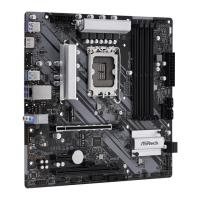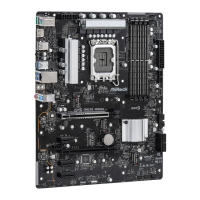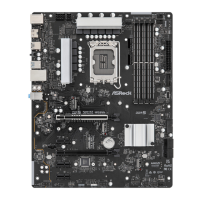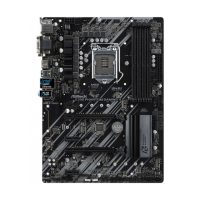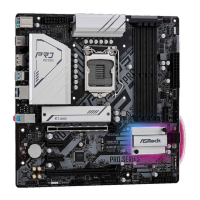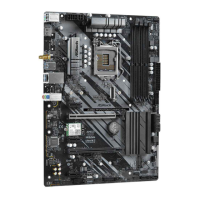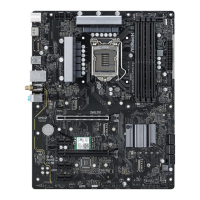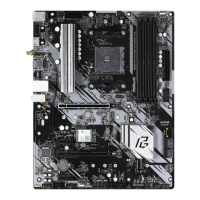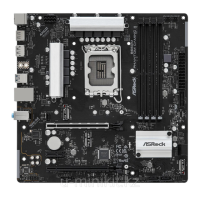Do you have a question about the ASROCK Phantom Gaming 4 Z690 and is the answer not in the manual?
Lists all items included in the motherboard package for user convenience and verification.
Details the technical specifications of the motherboard, including platform, CPU, memory, and expansion slots.
Provides a visual diagram and description of all onboard components and connectors on the motherboard.
Describes the rear panel connectors and their functions for external device connectivity.
Essential safety and handling guidelines to prevent damage to the motherboard and components before installation.
Step-by-step instructions for correctly installing the CPU into the motherboard socket.
Guides users on mounting the CPU cooler assembly, including fan and heatsink, for proper thermal management.
Provides instructions and configuration tips for installing DDR4 DIMM memory modules into the motherboard slots.
Explains the types and configurations of PCIe slots available on the motherboard for expansion cards.
Details the function and setup of jumpers on the motherboard, such as the Clear CMOS jumper.
Describes various onboard headers and connectors for system panel, power, LEDs, and fan connections.
Explains the functionality of the BIOS Flashback button for updating the BIOS without a CPU.
Details the Post Status Checker (PSC) feature, which diagnoses system hardware during boot-up.
Guides on installing and configuring multiple AMD graphics cards using CrossFire™ technology.
Instructions for installing M.2 WiFi/BT modules and Intel® CNVi components onto the motherboard.
Step-by-step guide for installing an M.2 NVMe SSD into the M2_1 socket.
Step-by-step guide for installing an M.2 NVMe SSD into the M2_2 socket.
Step-by-step guide for installing an M.2 SATA/NVMe SSD into the M2_3 socket.
Instructions on installing essential drivers and utilities from the support CD for motherboard features.
Guide to using the ASRock utility for system tuning, fan control, and monitoring.
Information on using the ASRock utility for updating BIOS, drivers, and downloading applications.
Explains the features and functions of the Nahimic audio software for enhanced sound performance.
Guide to customizing RGB lighting effects using the ASRock Polychrome SYNC utility.
An overview of the UEFI SETUP UTILITY and how to access it for system configuration.
Describes the default EZ Mode screen for quick system status checks and basic configurations.
Introduces the Advanced Mode for comprehensive BIOS settings and configurations.
Details the Main screen of the UEFI utility, showing system overview and favorite BIOS items.
Guides on using the OC Tweaker screen for overclocking CPU, memory, and other system parameters.
Explains advanced system configuration options like CPU, Chipset, Storage, and ACPI settings.
Describes the utility tools available within the UEFI, such as Instant Flash and RAID installer.
Covers monitoring system hardware status, including temperatures, fan speeds, and voltages.
Details security settings, including supervisor/user passwords and secure boot options.
Explains boot settings, boot priority, and CSM (Compatibility Support Module) configuration.
Describes options for saving changes, discarding changes, and exiting the UEFI Setup Utility.
| Chipset | Intel Z690 |
|---|---|
| CPU Socket | LGA 1700 |
| Form Factor | ATX |
| Memory Slots | 4 x DIMM |
| Maximum Memory | 128GB |
| M.2 Slots | 3 |
| RAID Support | RAID 0, 1, 5, 10 |
| USB 3.2 Gen2x2 Ports | 1 |
| USB 3.2 Gen1 Ports | 4 |
| USB 2.0 Ports | 4 |
| LAN | 1 x 2.5Gbps Ethernet |
| Audio | 7.1 CH HD Audio (Realtek ALC897 Audio Codec) |
| SATA Ports | 6 |

